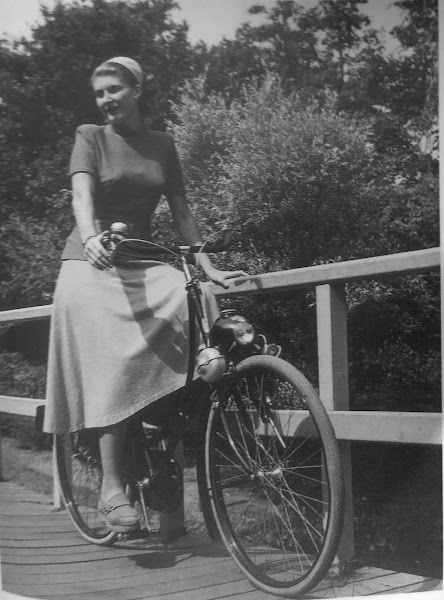
One of the former DKW engineers who was drawn into foreign ventures after the war was Bernhard Neumann. Neumann had been an engineer in DKW's motorcycle racing team before fleeing from the Soviet occupation to the west. In 1948 he, along with a number of other engineers, were enticed by an opportunity for work in Der Haag in The Netherlands. DKW's prewar F7 and F8 cars had been hugely popular in the Netherlands and, as all German patents had been invalidated after the Second World War, an investment company was considering building their own copies of the popular German car. To ensure he had something to offer, Neumann pocketed copies of DKW design drawings on his way out the door.

The car project in Holland ultimately fell through, but among the plans Neumann had smuggled out of Germany was that of the DKW Hifsmotor, the clip-on moped engine that had initiated DKW's success in 1919. Neumann and his small team developed a new version of the rear mounted cyclemotor, but the investors felt the rear wheel drive arrangement was too complex. Neumann and team went back to the drawing board and reworked the design for a front-wheel mounting. This simplified both construction and fitting as the new engine dispensed with belts and chains in favour of a friction roller.

Neumann and his Dutch partners, Rinus Bruynzeel and Nico Groenendijk founded a new company to manufacture the engine in 1948. The name they chose was Berini, which although it sounds Italian, was actually just a combination of the two first letters of their first names - Be..Ri..Ni.

The cycle-motor they developed went on sale as the Berini M13. Nicknamed the "Berini Egg" due to its distinctive egg-shaped petrol tank, the engine had a capacity of 25.7 ccs. The engine was easily bolted to a standard bicycle with its front mud-guard removed. The engine was held away from the wheel by a spring loaded cable. Releasing the cable dropped the engine onto the wheel and friction would spin up the engine. To stop, the cable was pulled in and the engine was pulled away from the wheel.

The Egg proved to be a popular seller and Berini's small factory in the Hague soon found itself unable to keep up with demand. A proper, expanded plant was necessary so Neuwmann called in the assistance of another DKW personality, William Werner. Werner was the former technical director of Auto-Union. He too had fled the Soviets in May 1945 for Bad Homburg in the British Occupation Zone. There he had founded a Central Store for Auto-Union Parts, much as former directors Dr Richard Bruhn and Dr Carl Hahn had done in Ingolstadt, in the American Zone. At this time there was uncertainty which occupation regime would gain precedence in any future Germany state, so Auto-Union AG established successor companies in each zone. Ultimately, the parts store at Ingolstadt would be recognized as the official successor company. Werner surrendered his rights to Ingolstadt and moved on. After establishing the new Berini factory in Rotterdam in 1951, Werner was offered the position of managing directorship.

Sales of the Egg and small outboard boat motors continued strongly. Since 1949 Berini had been manufacturing its own bicycles but in 1952 began manufacturing a moped, the M21. The M21 was a simple affair, powered by a 50cc motor. The petrol tank was incorporated inside the steel tube frame.

From there Berini developed a series of mopeds that ranged from simple and spartan through to sleek sports models.

Berini managed to maintain its successful lightweight motorcycle and moped business in the face of Japanese imports in the 1960s, joining forces with Gazelle and Laura Motoren by 1966.

In 1981 however, all plans, tools and plant were sold to Korea. That was not the end of Berini however and in 1991 was re-registered and began working in partnership with Suzuki to manufacture two-stroke motors and lightweight motorcycles in India. The company now sells electric scooters.
The modern company website: https://www.berini.eu/en/
Berini Owners Club: https://www.beriniclub.nl/
Berini M13 Owners Manual: https://heinkelscooter.blogspot.com/2022/02/berini-m13-operating-instructions.html
No comments:
Post a Comment